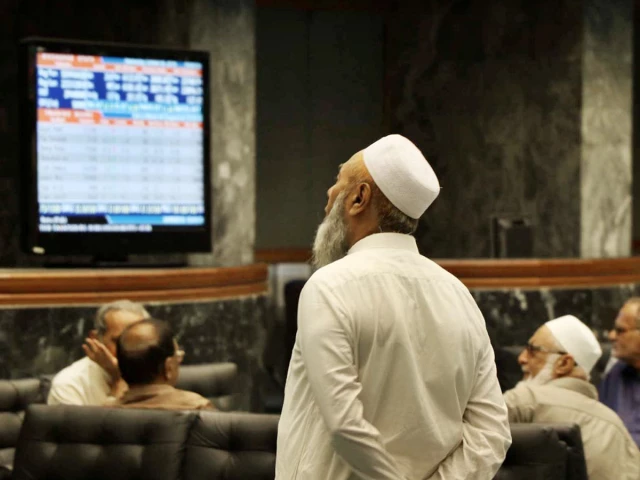Business
Pakistan’s trade deficit rises 33% in Q1 of FY25 – SUCH TV

Pakistan’s trade deficit surged 32.92 percent during the first quarter of the current fiscal year (July–September), reaching $9.36 billion, according to data released by the Pakistan Bureau of Statistics (PBS). The widening deficit was driven by a sharp rise in imports alongside a decline in exports.
Imports during July–September increased 13.49 percent to $16.97 billion, while exports fell 3.83 percent, settling at $7.60 billion.
On a monthly basis, Pakistan’s trade deficit in September 2025 expanded significantly, registering a 45.83 percent year-on-year increase, reaching $3.34 billion. Compared to August 2025, the deficit also rose 16.33 percent.
Imports in September totaled $5.84 billion, while exports dropped 11.71 percent year-on-year, amounting to $2.50 billion.
Economists caution that the growing gap between imports and exports highlights mounting challenges in Pakistan’s external sector, adding pressure on foreign exchange reserves and the balance of payments.
Earlier, in July 2025, Pakistan’s trade deficit widened to $2.75 billion, marking a 16.02 percent increase compared to June 2025, according to PBS.
Exports, however, grew 16.91 percent in July compared to the same month last year, reaching $2.697 billion, up from $2.307 billion in July 2024.
Imports in July also climbed 29.25 percent, totaling $5.449 billion, compared to $4.216 billion in the same month last year.
This pushed the trade deficit up 44.16 percent, from $1.909 billion in July 2024 to $2.752 billion in July 2025.
On a month-on-month basis, exports in July increased by 8.88 percent compared to $2.477 billion in June 2025.
According to PBS data, the exports in July (FY2025-26) were recorded at $2.697 billion as compared to the exports of $2.307 billion in July (FY2024-25).
The imports during July 2025 also increased by 29.25 percent and were recorded at $5.449 billion against the imports of $4.216 billion in last July.
Based on the figures, the trade deficit increased by 44.16 percent by increasing from $1.909 billion last July to $2.752 billion, this year.
Meanwhile, on month-on-month basis, the exports from the country witnessed an increase of 8.88 percent in July when compared to the exports of $2.477 billion in June 2025.
Business
Index reshuffle: IndiGo parent to enter Sensex from Dec 22; Tata Motors Passenger Vehicles dropped – The Times of India

InterGlobe Aviation, the operator of IndiGo, will be included in the BSE’s 30-stock benchmark index Sensex from December 22, the BSE Index Services said on Saturday.As part of the reconstitution exercise, Tata Motors Passenger Vehicles Ltd will be dropped from the index, the announcement added, PTI reported.The changes will take effect from market open on Monday, December 22, and have been made by BSE Index Services Pvt Ltd (formerly Asia Index Pvt Ltd).In the broader BSE 100 index, IDFC First Bank Ltd will be added, replacing Adani Green Energy Ltd. Within the BSE Sensex 50 index, Max Healthcare Institute Ltd will be included, while IndusInd Bank Ltd will be removed.Further, in the BSE Sensex Next 50 index, IndusInd Bank and IDFC First Bank will replace Max Healthcare Institute and Adani Green Energy.
Business
India’s New Four Labour Codes: From Gratuity After One Year To Free Annual Health Checkups; Who Will Receive Gratuity In Case Of Private Sector Employee’s Death?
)
New Labour Codes In India: The Government of India has introduced a major reform that will benefit lakhs of employees who frequently change jobs, including fixed-term employees, women, gig workers, MSME staff, and contract workers. Under the new Labour Codes, the minimum service required to receive gratuity has been reduced from five years to just one year. This means more workers will now be eligible for gratuity even if they don’t stay long in one organisation.
This major reform is part of the government’s plan to replace 29 old labour laws with four new Labour Codes. These include the Code on Wages, the Industrial Relations Code, the Social Security Code, and the Occupational Safety Code, replacing outdated regulations framed between the 1930s and 1950s. The goal is to make business processes smoother, improve worker welfare, update outdated rules, and create a more transparent and worker-friendly labour system.
Gratuity: What It Is And What Happens After Private Employee’s Death
It is a one-time amount that employers give to employees as a thank-you for their service. Under the Payment of Gratuity Act, private sector employees can receive gratuity when they leave a job (due to resignation or termination), retire, or become disabled. In case of an employee’s death, the amount is paid to their nominee. Earlier, employees had to complete at least five years of continuous service with the same employer to be eligible, except in situations of death or disability. (Also Read: What Is EPS-95 Scheme? If Employee Becomes Permanently Disabled, Will He Get Pension? Check Benefits, Eligibility Criteria, And How It Is Calculated)
New Labour Codes: How New Gratuity Rule Strengthens Worker Security?
With this reform, employees will not be penalised for having short job tenures, giving young workers who often switch jobs better financial security. It also benefits contractual, fixed-term, and gig workers by making gratuity easier to receive and more predictable. By offering gratuity to more people, the government is encouraging formal employment and improving the safety net for all workers. Overall, this change makes India’s workforce more secure and brings labour benefits closer to global standards.
New Labour Codes: Benefits Including Free Annual Health Check-Ups
For the first time, all workers, whether permanent, contractual, or fixed-term, must receive appointment letters, which improves job security and helps reduce disputes. The new Labour Codes also make preventive healthcare mandatory, requiring employers to provide yearly health checkups for workers aged 40 and above, helping with early detection and lowering long-term health risks.
Under the Code on Wages, every worker across all sectors is now entitled to minimum wages, ensuring that no one falls below a basic income level. Adding further, women are allowed to work in all types of jobs, including night shifts, giving them greater employment opportunities and flexibility.
Business
Global Organisations Laud India’s Labour Reforms For Social Protection, Inclusive Growth

New Delhi: Top global organisations such as the International Labour Organisation (ILO) and the International Social Security Association (ISSA) have welcomed India’s announcement to bring four Labour Codes into effect — recognising these reforms as a major step towards strengthening social protection, enhancing minimum wage frameworks and building institutional capacity, the government said on Saturday.
The global bodies highlighted that India’s efforts contribute significantly to the wider international discourse on inclusive and modern labour systems.
Their remarks further underscore India’s growing leadership in shaping global labour and social security standards, according to a Labour Minister statement.
Gilbert F. Houngbo, Director-General of the International Labour Organization (ILO), stated in an X post that “Following with interest developments of India’s new Labour Codes announced today, including on social protection and minimum wages”.
“Social dialogue among govt, employers and workers will remain essential as reforms are implemented to ensure they’re positive for workers and business,” Houngbo mentioned.
The International Social Security Association (ISSA), in its post on social media platform X, said that India’s Labour Codes add momentum to global efforts for stronger, more inclusive social security systems.
“ISSA welcomes this milestone and encourages sustained investment in coverage, protection and institutional capacity,” it noted.
The ministry said that this reflects the positive international response to India’s Labour Codes, particularly in advancing fair wages, expanding social protection coverage and promoting greater formalisation of the workforce.
The four labour codes include the Code on Wages, 2019, the Industrial Relations Code, 2020, the Code on Social Security, 2020 and the Occupational Safety, Health and Working Conditions Code, 2020 with effect from November 21, 2025 — rationalising 29 existing labour laws. The implementation of the four Labour Codes addresses the long-pending need to move beyond colonial-era structures and align with modern global trends.
The Labour Ministry has reaffirmed its commitment to sustained collaboration with global institutions and domestic stakeholders to further strengthen India’s labour ecosystem and ensure effective implementation of the reforms.
-

 Tech1 week ago
Tech1 week agoNew carbon capture method uses water and pressure to remove CO₂ from emissions at half current costs
-

 Politics1 week ago
Politics1 week agoBritish-Pakistani honoured for transforming UK halal meat industry
-

 Business1 week ago
Business1 week agoThese 9 Common Money Mistakes Are Eating Your Income
-

 Sports7 days ago
Sports7 days agoTexas A&M officer scolds South Carolina wide receiver after touchdown; department speaks out
-

 Tech1 week ago
Tech1 week ago$25 Off Exclusive Blue Apron Coupon for November 2025
-

 Fashion1 week ago
Fashion1 week agoAfter London, Leeds and Newcastle, next stop Glasgow for busy Omnes
-

 Sports1 week ago
Sports1 week agoApple scrapping MLS Season Pass service in ’26
-

 Business1 week ago
Business1 week agoWhat’s behind Rachel Reeves’s hokey cokey on income tax rises?














